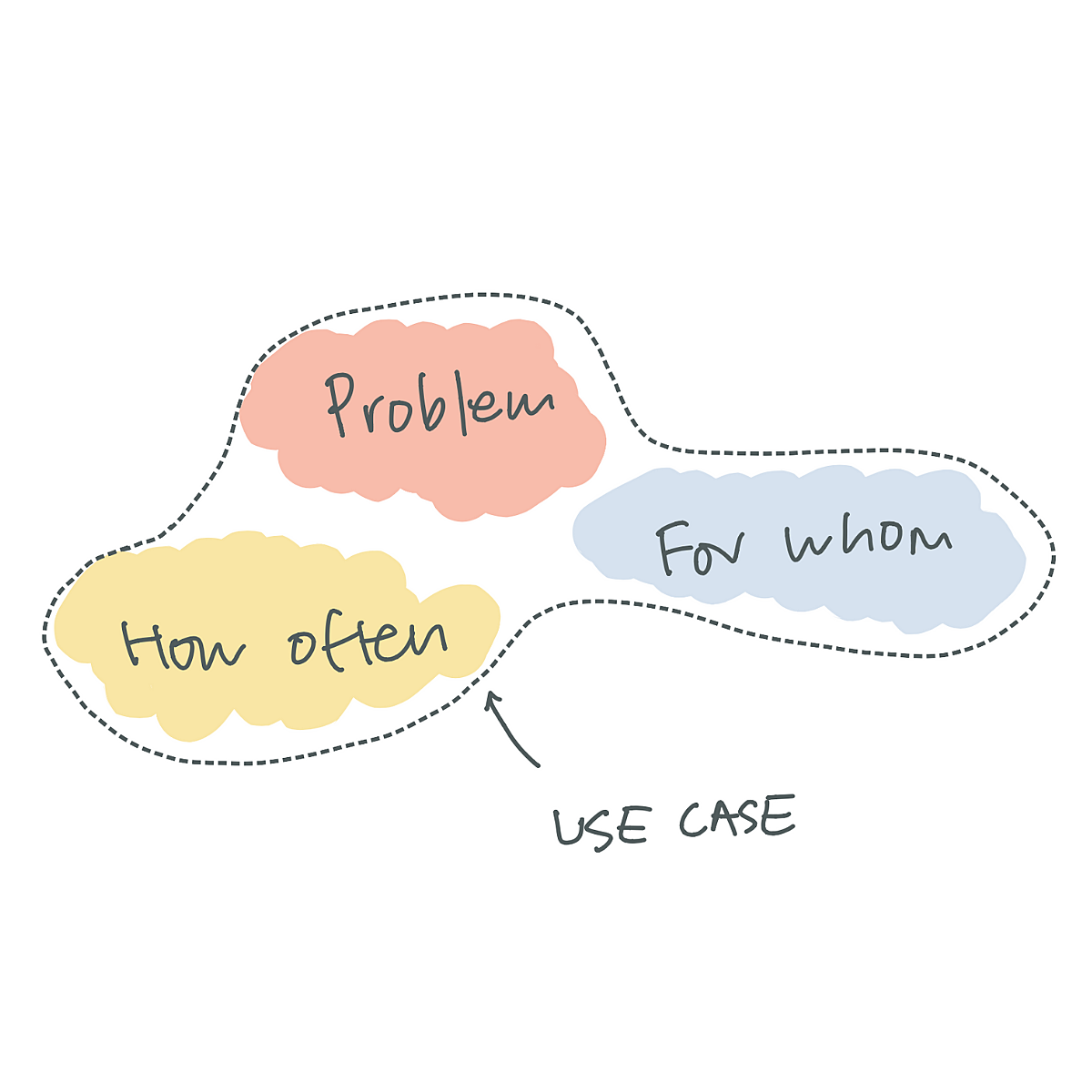
Your use case defines the problem your product was designed to solve.
A use case draws a boundary around the natural behaviour that you're trying to tap into, it highlights where things break down and how you fit in.
It is important that you understand them because they are the foundation that you use to prioritise things. If you don't understand your use case then you are going to cast your net wide and build a bunch of features, hoping that something sticks.
With a clear understanding of when people should use your product, you can get specific and make a kickass experience.
You shouldn't have to figure out what your use case is. It's the problem your product was designed to solve.
People were trying to solve that problem before your product came along.
They still are.
When they do...that's your use case, and when they should be reaching for you.
You can have lots of use cases. I know...but start with one, primary use case.
- What is the problem someone your people are trying to solve?
- Who are these people?
- How often do they need to solve this problem?
- Why would they use your solution over all the other ways they could solve the problem?
If you can answer these questions coherently then you are 👍